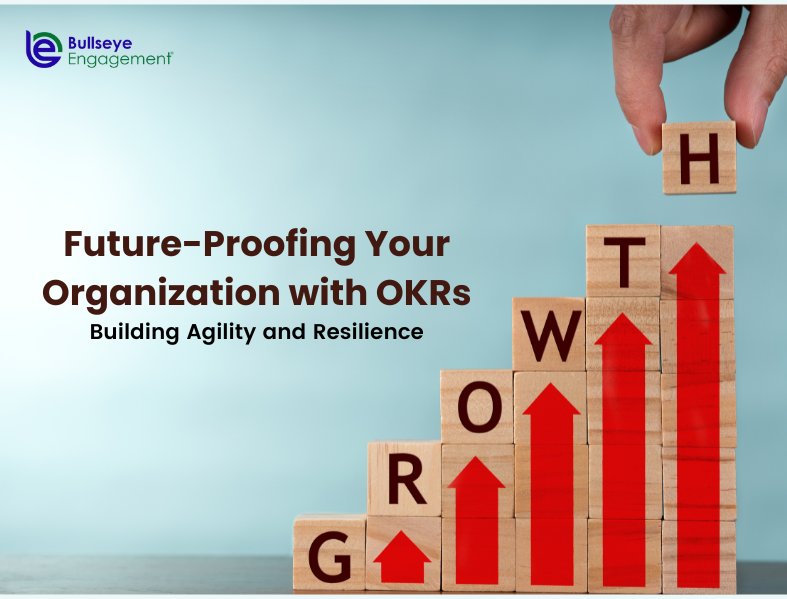Introduction
In an era marked by rapid technological advancements and unpredictable market shifts, organizations must prioritize agility and resilience to thrive. Objectives and Key Results (OKRs) are a strategic framework that can significantly aid in this endeavor, aligning and mobilizing teams toward common goals with flexibility and focus. BullseyeEngagement’s OKR solutions provide the tools necessary to implement this transformative strategy effectively.
Understanding the Need for Agility and Resilience
Agility refers to an organization’s ability to adapt quickly to market changes and external pressures, while resilience is about withstanding those changes and recovering quickly. As businesses face increasing complexities, the integration of OKRs can facilitate these critical attributes by setting clear, measurable, and adaptable goals.
Implementing OKRs to Drive Agility
OKRs encourage a culture of rapid experimentation and iterative learning, which are key to building an agile organization. By defining ambitious objectives and aligning them with actionable key results, teams can pivot quickly in response to changes without losing sight of their ultimate goals. This dynamic capability ensures that organizations can respond to opportunities and threats with speed and precision.
- Set Transparent and Flexible Objectives: Ensure that objectives are clear and comprehensible across the organization, allowing teams to understand how their efforts contribute to larger outcomes. Flexibility in these objectives permits adjustments as market conditions evolve, ensuring relevance and effectiveness.
- Encourage Cross-Functional Collaboration: Use OKRs to break down silos and foster collaboration between departments. This approach enhances problem-solving capabilities and innovation, as diverse perspectives come together to meet common objectives.
Building Resilience with OKRs
Resilience in business is about endurance and the capacity to sustain growth under pressure. OKRs support this by embedding robustness into the goal-setting and achievement process, helping organizations to anticipate challenges and equip themselves for potential disruptions.
- Develop a Cadence of Review and Feedback: Regular OKR check-ins allow teams to assess their progress and address barriers quickly. This continuous loop of feedback and adjustment not only helps teams to stay on track but also builds resilience by institutionalizing the process of learning from setbacks.
- Align OKRs with Risk Management: Integrate risk management strategies with OKRs by setting key results that monitor risk indicators and mitigation steps. This proactive approach ensures that the organization is always prepared, reducing the impact of potential threats.
Conclusion
Future-proofing your organization isn’t just about surviving; it’s about thriving in uncertainty and turning potential challenges into opportunities for growth. Implementing OKRs with BullseyeEngagement provides a structured yet flexible framework that prepares your teams for whatever lies ahead, ensuring sustained success in the dynamic business landscape.
For more information on implementing OKRs and to explore how BullseyeEngagement can help your organization build agility and resilience, visit our OKRs page.

















